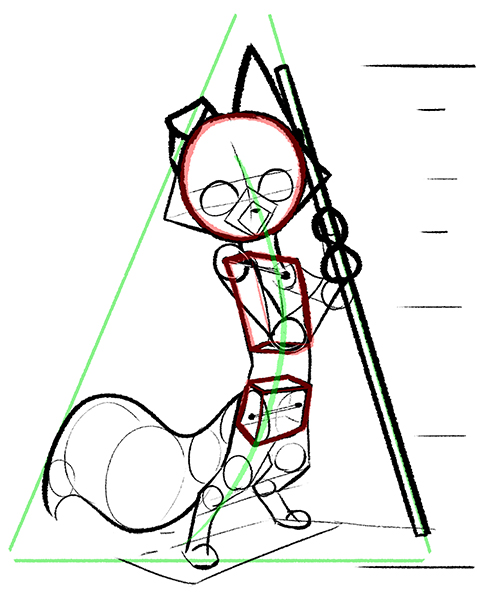Step 1: Composition
This is Amos, a timid, young fox with great concern for his friends. He wears a navy blue cloak and carries with him a simple wooden staff. Why tell you this? To give context that is necessary to understand the character. Character illustration is not just about appearance but also personality, which can be conveyed through expression, pose, colors, and even shapes. Keep this in mind as you draw.
To begin this new illustration, I drew a triangle, which I will use to guide the drawing process. This is by no means necessary but makes for a satisfying composition. Next is the actual pose. Reference imagery is highly recommended here. Find images online or take a picture of yourself in the mirror of the pose you want. Begin by drawing a simple “C” or “S” curve. This will be your line of action. By aligning the pose with this curve, you can ensure that it will appear more dynamic, not stiff.
Then, we have the skeleton, which, for our purposes, can be simplified. There are three major elements that we will begin with: the head, ribcage, and pelvis. The first can be simplified as a circle, while the latter two can be represented by boxes. These are the rigid elements around which we can build other parts of the body. Joints in the limbs can be represented by circles, which are then connected by lines defining the arms and legs. This character also has a tail, which is an extension of the spine. In this sketch, I also used contour lines to define the form of the tail. It is also important to keep things simple at this stage, which allows us to focus on the bigger picture before we get to the finer details.
